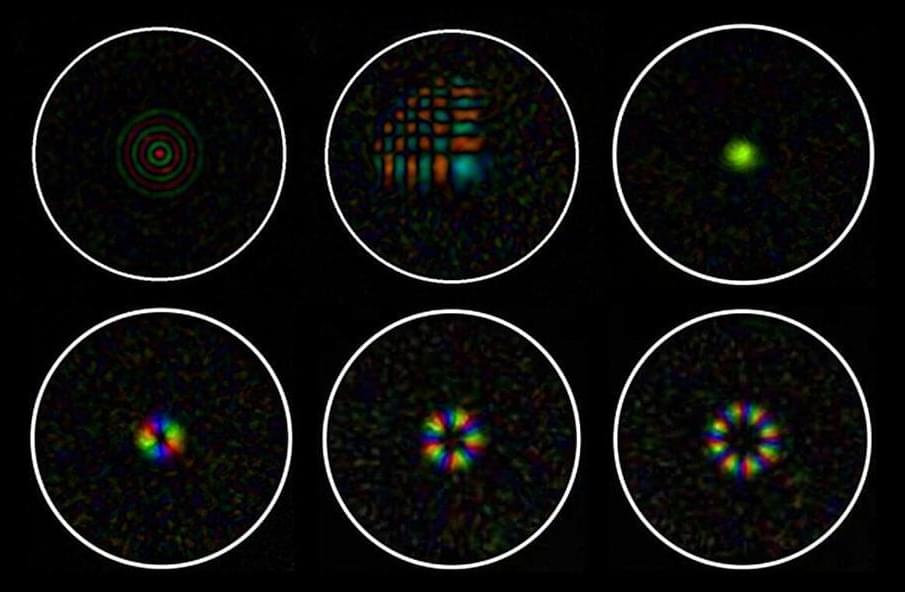OpenAI used to say that artificial general intelligence would change everything. Not anymore.
Get the latest international news and world events from around the world.




Quantum Scientists Just Made a Major Breakthrough Using 31 Superconducting Qubits
Scientists have achieved unprecedented control over quantum transport using a 31-qubit superconducting processor, opening new possibilities for next-generation electronics and thermal management. This approach allows researchers to observe and manipulate quantum particles with extraordinary precision, potentially revolutionizing how we develop future technologies.
The research, led by teams from Singapore and China, marks a significant advance in understanding how particles, energy, and information flow at the quantum level. This breakthrough could accelerate development of more efficient nanoelectronics and thermal management systems.

Microscopy at the tip of a hair-thin optical fiber: New approach pre-shapes light for unprecedented control
Researchers at the University of Adelaide, as part of an international team, have developed an approach that makes advanced microscopy possible through an optical fiber thinner than a human hair.
“Recent advances in optics have made it possible to controllably deliver light through extremely thin optical fibers, but delivering more complicated light patterns that are needed to perform advanced microscopy has eluded researchers until now,” said Dr. Ralf Mouthaan from the University of Adelaide’s Center of Light for Life, who undertook the project.
With a footprint far smaller than any other fiber imaging device, this will enable microscope images to be collected from previously inaccessible parts of the human body, while minimizing associated tissue damage.

NASA’s Swift Studies Gas-Churning Monster Black Holes
Scientists using observations from NASA’s Neil Gehrels Swift Observatory have discovered, for the first time, the signal from a pair of monster black holes disrupting a cloud of gas in the center of a galaxy.
“It’s a very weird event, called AT 2021hdr, that keeps recurring every few months,” said Lorena Hernández-García, an astrophysicist at the Millennium Institute of Astrophysics, the Millennium Nucleus on Transversal Research and Technology to Explore Supermassive Black Holes, and University of Valparaíso in Chile. “We think that a gas cloud engulfed the black holes. As they orbit each other, the black holes interact with the cloud, perturbing and consuming its gas. This produces an oscillating pattern in the light from the system.”
A paper about AT 2021hdr, led by Hernández-García, was published Nov. 13 in the journal Astronomy and Astrophysics.

LEDs Based on Transition Metal Dichalcogenides Display Reduced Efficiency Losses
Light-emitting diodes (LEDs), semiconductor-based devices that emit light when an electric current flows through them, are key building blocks of numerous electronic devices. LEDs are used to light up smartphone, computer, and TV displays, as well as light sources for indoor and outdoor environments.
Past studies consistently observed a decline in the performance and efficiency of LED devices based on two-dimensional (2D) materials at high current densities. This loss of efficiency at high current densities has been linked to high levels of interaction between excitons, which cause a process known as exciton-exciton annihilation (EEA).
Essentially, the properties of some 2D materials prompt excitons to strongly interact with each other, causing excitons to “deactivate” one another. This results in a significant waste of energy that could otherwise contribute to the lighting of LEDs.

Mushrooms are more like us than we think
The Niitsitapi, or Blackfoot Indians, imagined that giant puffballs were created by fallen stars. They painted the fruit bodies of these globose fungi as white circles arising from a dark band along the bottom edge of tipi covers to symbolize the birth of life. In our era of global environmental damage, a strain of this indigenous reverence for fungi has been adopted as a symbol of hope.
Sign up to get exclusive access.

Learn Quantum Physics More Easily With This Breakthrough Approach
A team of physics educators from Italy, Hungary, Slovenia, and Germany is pioneering a new approach to teaching quantum physics in schools. Traditional classroom methods have typically emphasized the history and origins of quantum physics, which can often create challenges for learners.
The researchers, including physics education specialist Professor Philipp Bitzenbauer from Leipzig University, focus on qubits—two-state systems that are both the simplest and most crucial quantum systems, capable of describing many situations. Mastering the control and manipulation of these qubits is fundamental to advancing modern quantum technologies.
According to Bitzenbauer, until now there have been no empirical studies of the effectiveness of these approaches using two-state systems in developing conceptual understanding in learners. There is also a lack of scientific research on the specific advantages and disadvantages for learning of different teaching approaches based on two-state systems.